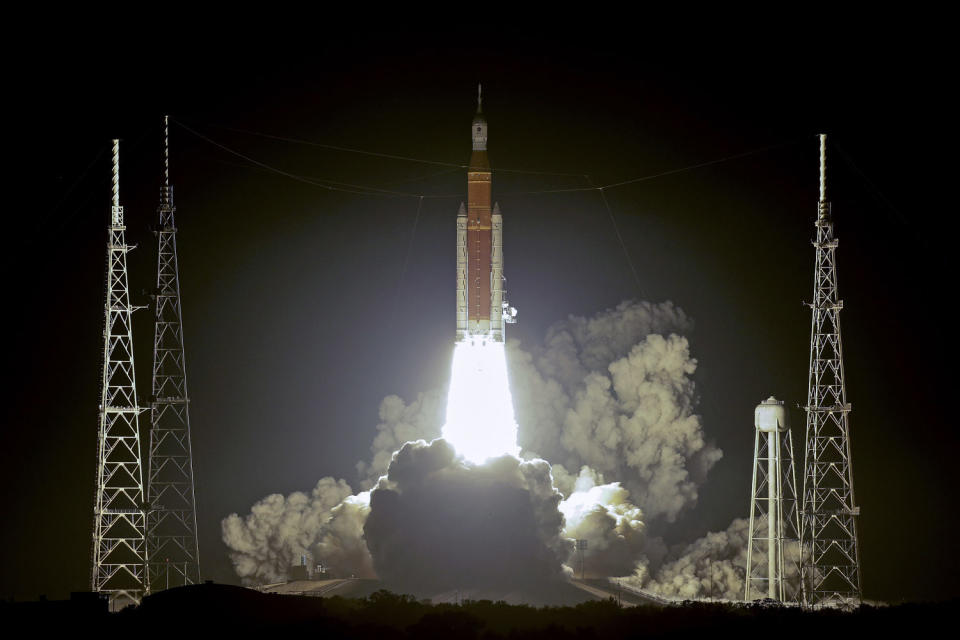Ongoing issues with Boeing’s Starliner spaceship have been front and center this summer, but a new government report highlights other shortcomings of the company’s aerospace work.
The report, released Thursday by NASA’s Office of Inspector General, calls into question Boeing’s standards and quality control for its part in NASA’s efforts to return astronauts to the moon.
In NASA’s development of its next-generation megarocket, known as the Space Launch System, it gave Boeing the contract to build the rocket system’s powerful upper stage.
But according to the report, Boeing’s quality control systems fall short of NASA’s requirements, and some known deficiencies have gone unaddressed. What’s more, the workers on the project are not, as a whole, sufficiently experienced or well trained, according to the inspector general.
The report brings additional scrutiny to Boeing, which is already dealing with problems plaguing the first crewed flight of its Starliner capsule.
That mission was meant to be the final step before Boeing could begin routine flights to the International Space Station for NASA. But a helium leak and issues with the Starliner’s thrusters have left the two NASA astronauts who flew the capsule into space stuck in orbit for more than two months. The journey had been meant to last just eight days.
Meanwhile, Boeing’s aviation arm continues to deal with fallout after a door panel blew out on one of its 737 Max airplanes in January.
Now, the report from NASA’s inspector general has found that the second stage of the Space Launch System — the part Boeing is responsible for — is significantly over budget. It blew through an original estimate of $962 million in 2017, and the projected price tag for the work through 2025 is now $2.8 billion.
The project is also years behind schedule: Boeing pushed back delivery of the rocket stage from February 2021 to April 2027.
As for Boeing’s quality control practices, the NASA inspector general said that from 2021 to 2023, federal oversight officers issued 71 “Corrective Action Requests” to address “deficiencies in quality.”
Many of the requests took aim at Boeing’s work at NASA’s Michoud Assembly Facility in Louisiana.
“Quality control issues at Michoud are largely due to the lack of a sufficient number of trained and experienced aerospace workers at Boeing,” the report said.

Many of the identified deficiencies ultimately did not get fixed, the report added.
“Boeing’s process to address deficiencies to date has been ineffective, and the company has generally been nonresponsive in taking corrective actions when the same quality control issues reoccur,” it said.
In response to a request for comment, a Boeing representative directed NBC News back to NASA.
Catherine Koerner, the associate administrator for the Exploration Systems Development Mission Directorate at NASA headquarters, said in a written response attached to the report that the agency holds its programs to the “highest technical and programmatic standard.”
“NASA is dedicated to ensuring that its workforce and associated contractors are qualified and properly trained to ensure the safety of its missions,” Koerner wrote.
The report included several recommendations, including levying “financial penalties for Boeing’s noncompliance with quality control standards.” The inspector general said, however, that NASA decided not to introduce any kind of financial discipline.
The 322-foot-tall Space Launch System and its accompanying Orion spacecraft are designed to launch astronauts to the moon. The eventual goal is to build a base on the lunar surface.
NASA completed an uncrewed test flight of the Space Launch System rocket and Orion capsule in 2022, a mission dubbed Artemis I. It is expected to launch four astronauts on the system’s first crewed flight around the moon (the Artemis II mission) next year.
In addition to the first-generation SLS rocket, NASA is also developing a more powerful model that can haul more cargo to the moon. Boeing is the prime contractor for the upper stage of that upgraded version, known as the Space Launch System Block 1B. It began the work in 2014.
The initial plan called for the upgraded rocket system to be used to send the Artemis II astronauts around the moon, but the timeline has been pushed back — changes that led to delays in the development schedule and increased costs, according to the inspector general.
The new report said the SLS Block 1B version is likely to cost $5.7 billion by the time it launches.
The assessment is the latest setback for NASA’s return-to-the-moon program, which has been beset by holdups and budget overruns. NASA has spent more than $42 billion over more than a decade on its Space Launch System and Orion spacecraft.
Last year, NASA’s inspector general estimated that each Artemis launch would cost $4.2 billion.
This article was originally published on NBCNews.com
EMEA Tribune is not involved in this news article, it is taken from our partners and or from the News Agencies. Copyright and Credit go to the News Agencies, email news@emeatribune.com Follow our WhatsApp verified Channel





